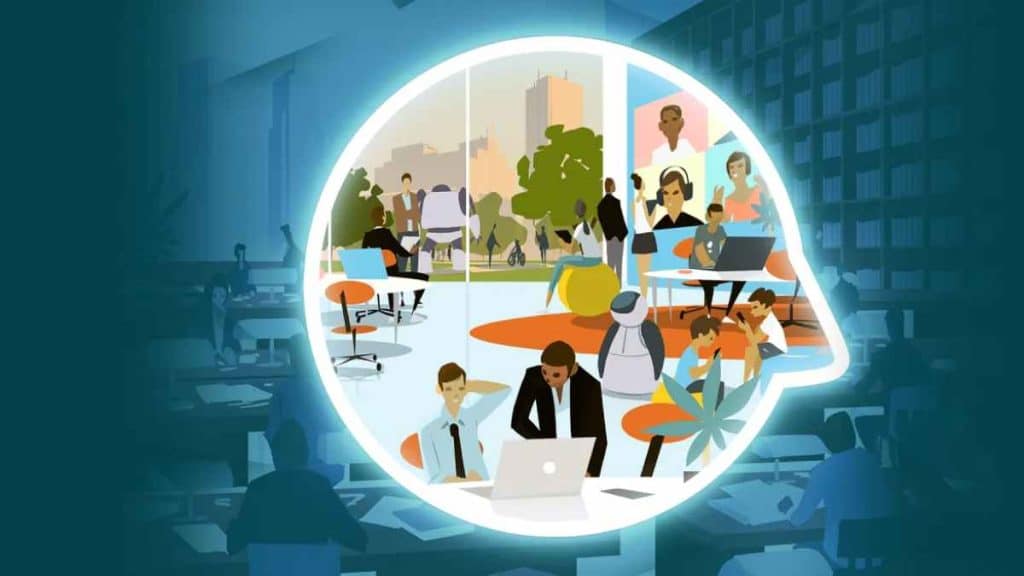Two years ago, the lethal epidemic enormously disrupted the global labor markets within a short period. It is no secret that even though the disruptions were short and sudden, they were severe. More than millions of people across the globe lost their jobs, while others adopted the work-from-home model.
The overnight inception of the pandemic accelerated digital transformation, thus forcing organizations to adopt new working models and not forgetting to mention that this remote working model has provided massive benefits to all businesses, including continuity conundrum.
However, effective intelligent automation has boosted e-commerce and remote work trends, with 25% more workers. Moreover, various organizations have reimagined their workplace to create a productive, safe, and enjoyable space for a better employee experience.
Challenges Brought About by Remote Working Models
Just when COVID-19 set its foot forward, it began spreading like wildfire. As a result, the global economy experienced an exorbitant drop in March 2020. This unexpected occurrence gifted the existing workforce with furloughs and unemployment.
Besides, more than 60% of the employed workforce shifted to the remote working model. This workforce, supported by intelligent automation, has contributed to more than two-thirds of the global economy. However, this comes with a cost, as productivity has experienced a massive downfall because of new working models.
Another enormous challenge faced by employees is the fragmented communication system. Unlike the traditional working system, there are zero physical communication challenges. So the brainstorming sessions in between work and the spontaneous lunch meetings have been eliminated by remote working.
All organizations have adopted the new remote working model to combat the deadly pandemic. However, it has become a real challenge to maintain the thin line of balance between work and life. It is because of the unscrupulous stress brought about all of a sudden by confinement and isolation.
Post-COVID World – Reconceptualizing the Employee Experience
There is no doubt that COVID-19 has had a massive impact on the lives of every person. Owing to this, numerous organizations and employees have anticipated the uncertainty brought about by the pandemic. It has adversely affected the business functioning, economic activity, employee engagement, productivity, etc.
The combined resilience has made it possible for us to take control of these unprecedented times. So, there was no other way to keep all organizations functional other than reimagining the employee experience. It is essential to curate a workforce experience to leverage the new practices during the pandemic.
The working space is transformed into a nonlinear experience by incorporating a digital transformation strategy. Besides, many organizations consider employee attributes like characteristics and skills for prompting to reimagine employee experience.
There is a wide range of factors that significantly impact the holistic working experience of employees. Even though these experiences have been overlooked, the situation is beginning to change for good. All thanks to COVID-19 for bringing in changes and delivering a shifting paradigm in work.
However, the question of safety considerably rises. Employers are also thinking hard to consider how connected and purposeful a distributed workforce can be.
Automation for Reimaging Work and Employee Experience
The workforce and digital process automation requirements vary from organization to organization. It is because every organization has various conditions, including:
- The important roles
- The amount of collaboration that is required for excellence
- The talent which is required
- The location of the office, etc.
Some of the ways to reimagine employee experience include:
● Empathy
Being empathetic towards employees within the workforce is of absolute importance. It ensures that employees receive a reassuring and calm working experience to strengthen the culture of trust. So employers shall build stories around challenges and struggles for fostering a trustworthy environment. This encourages employees to have the confidence to seek support.
● Flexible Working Model
Whenever it comes to decision-making, most employers favor equity. Incorporating IA within the remote working model has brought a paradigm shift. So it allows flexibility for customizing experiences as per the preference of employees.
When employee experience is required at its optimum, many organizations can only do the bare minimum. Presently, all organizations are in dire need of employee experience. So all employers need to look deep into the possible approach to meeting the distributed nature of work.
Meeting the Employee Experience Imperative
The employee experience stack contains much more than examined, explained, and imagined. The dramatic shift of the remote working model with the commencement of the pandemic brings about the employee experience. While some organizations start at the core of refining employee experiences, others jump at the edge to work their way inwards. A few of the reimagined employee experiences include:
- Diminishing the over-lengthening employee onboarding times.
- Reducing the stagnating worker productivity
- Eliminating unnecessary load on employees for managing the growing complexity
- Boosting employee engagement and satisfaction, etc.
To Conclude
You must know that there is no utterly novel employee experience. As all organizations are building their workforce on the shoulders of giants, an inclusive and holistic approach is crucial. Only then can one successfully address the existing sprawling and overtly complex employee experience.
Organizations looking forward to providing a holistic approach for reimagining employee experience can acquire digitalCOLLEAGUE from HCL today.
